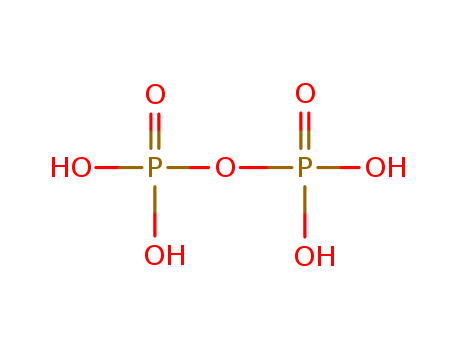- Chemical Name:Pyrophosphate ion
- CAS No.:14000-31-8
- Molecular Formula:O7P2
- Molecular Weight:177.975
- Hs Code.:
- European Community (EC) Number:802-671-2
- UNII:X3SSV2V6L3
- DSSTox Substance ID:DTXSID4074514
- Nikkaji Number:J220.819I
- Wikidata:Q290828
- Mol file:14000-31-8.mol
Synonyms:Analog, Pyrophosphate;Diphosphate;Diphosphates;Pyrophosphate Analog;Pyrophosphate Analogs;Pyrophosphates






